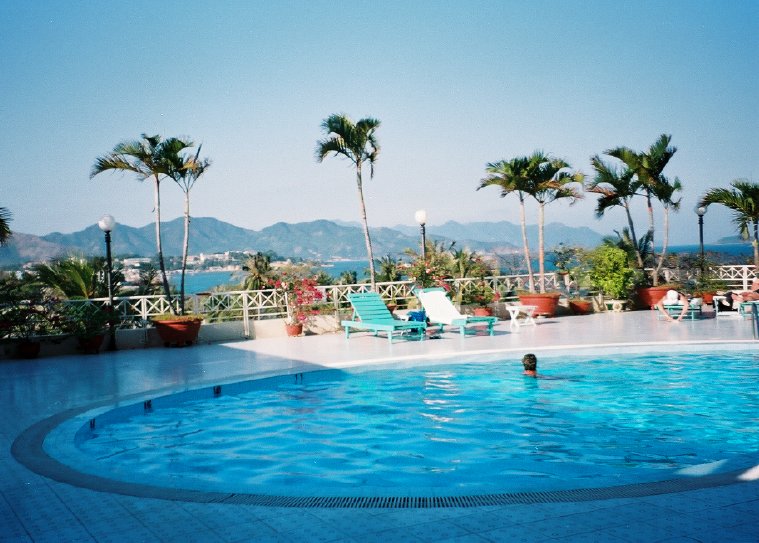INDOCHINA INTERNATIONAL CONSULTING CO., LTD
HO Add: 62L/36 Nguyên Hồng, Ward 11, Bình Thạnh District, HCMC - Vietnam
Biz Office Add: #48 Road No 11, Quarter 6, Hiệp Binh Chánh Ward, Thủ Đức, HCMC - Vietnam
®Source: http://viipip.com should be clearly quoted for any use of information extracted from our website.
Publication permit No: 60/GP-TTĐT , April 05, 2010.

TPP’s demise sounds no death knell
Date: 1/11/2017 2:16:08 PM
The final doomsday countdown has begun for the Trans Pacific Partnership.
Donald Trump will take the oath to become the 45th President of the US in less than two weeks, on January 20, 2017.
In an announcement that sent shock waves across the world, the President-elect had said on November 21, 2016, that on his very first day in office, he would kill the agreement that 12 nations had negotiated for years.
Without its major driving force, the US, as a member, the trade pact, said to be the biggest ever breakthrough in global trade liberalization, simply cannot pull its weight.
Under the agreement’s rules, the TPP can only come into force if it is ratified by at least six members representing 85 percent of the group’s combined GDP. By itself, the US accounts for nearly 60 percent of the group’s GDP.
Trump, essentially a businessman and a hawkish “America first” advocate, had repeatedly slammed TPP for not giving the US any direct and profound economy-wide benefits and taking away jobs from American people.
Some economists had estimated that the TPP, if implemented, would increase annual real incomes in the US by $131 billion, or no more than 0.5 per cent of GDP, until 2030.
However, January 20 is yet to come and it may be too soon to pronounce the TPP dead, because it remains uncertain if Trump meant he could do it or he would do it.
If some trade experts or even politicians are still clinging to hopes that the landmark pact, combining 36 per cent of world GDP, can be brought back to the negotiation table, there is no need to call them delusional.
Stranger things have happened. Just look at how things unfolded during the 2016 US Election. At the outset, not many people gave Trump even an outside chance at being the US President. Now he is on the verge of being sworn in.
Trump may reconsider his own TPP decision because perspectives are different from the driver’s seat of the US economy. He has to consider not just foreseeable economic benefits but the merits and demerits of his country’s global trade leadership role in the years to come.
Anyway, here in Viet Nam, a TPP member long hyped as its largest beneficiary, the agreement is no longer an issue of major concern. The focus is on how trade liberalization will move in the coming months and years, with or without the US, and what the new directions are for smaller TPP members, especially export-driven economies like Viet Nam.
Not devastating
For all the touted benefits, the TPP’s collapse is not likely to be devastating for its member nations, fortunately.
“Do not expect any dramatic economic consequences from TPP’s demise” said Stephen Olson, a scholar at the Hong Kong University of Science and Technology.
“Trade is already open and flowing at robust levels amongst many TPP partners and that will continue.”
According to the Asian Development Bank, from 2000 onwards, nearly 100 new free trade agreements (FTAs) have been signed in the Asian region alone. Within the TPP group, the game leader - the US - has FTAs in place with 6 of its 11 members, including the North American Free Trade Agreement (NAFTA) with Canada and Mexico.
Viet Nam, a comparatively small economy, has signed 12 FTAs with powerful economic blocs like the EU, and with large economies like Japan and South Korea.
Prominent economist Vo Tri Thanh, chairman of Viet Nam’s Asia Pacific Economic Cooperation (APEC) 2017’s organizing committee, said: “TPP’s demise is disappointing, but with or without TPP, the global trade liberalization trend is irresistible.
“I think it is human nature to be eager to explore new things, learn new ways and get connected. In business, the production and trade capacity of each country is so huge and diverse it can’t satisfy its own demand without international trade connectivity,” he added.
Thanh said the benefits of free trade’s lower tariffs, better connectivity and larger markets encourage businesses to exploit gains from global specialization and develop value chains.
“TPP’s dissolution may cause some fluctuations in the global market, but it definitely can’t reverse the free trade trend. Free trade will remain the mainstream (form of) economic cooperation in the world,” he said.
His observations seem to match what the 11 remaining TPP signatories have been doing over the last couple of months.
Following Trump’s statement, there have been clear signals that TPP members in Asia are shifting their attention to other trade opportunities. The Regional Cooperation Economic Partnership (RCEP), a proposed trade initiative including the 10 ASEAN members plus China, Japan, South Korea, India, Australia and New Zealand, has been most talked about recently.
Negotiations on RCEP started in 2012 and 16 rounds have been completed so far, covering trade in goods and services, competition policies and dispute settlement, among other things. Even though some economists have said RCEP does not match TPP in terms of the level of liberalization, it is now an alternative choice for many TPP members. They will push harder to get it completed, and the sooner the better.
RCEP has also attracted the attention of several export economies, including non-Asian TPP members like Peru and Chile. Chances that many more countries will join RCEP negotiations are huge, provided they are FTA signatories with ASEAN, according to expert Kavaljit Singh of Madhyam, New Delhi.
Thanh also feels that TPP’s loss will be RCEP’s gain. It is already receiving more attention from both TPP members and non-members, including Viet Nam. Many economies will express their interest in joining the pact when it takes proper shape and it becomes clear if China will take a leadership role as rumoured, according to Thanh.
If adopted, RCEP would be the largest free trade bloc in the world, accounting for 40 per cent of global trade and 45 per cent of the world’s population with a combined GDP of $22 trillion.
Reforms will continue
When one country is said to benefit most from a pact, it also stands to lose the most from its demise, and several experts have remarked on this fact.
But a specter of gloom, with falling foreign investment and limited export markets, is uncalled for.
“With or without TPP, the Vietnamese economy will stay on a positive note because all the preparatory work and reforms in the lead up to TPP have been underway, leading to new, positive changes beneficial to the business community and national sustainable development,” Thanh said.
Over the last three months, Vietnamese Prime Minister Nguyen Xuan Phuc has consistently sent out a firm message in response to people’s concerns about TPP: “With or without TPP, we will move on with our open-door policy and our ongoing reform process.”
Viet Nam will become even more proactive with its reforms, adapt itself to better to international trade rules and take full advantage of opportunities created by both bilateral and multilateral trade agreements, he said.
Those who are familiar with Vietnamese politics know that the country’s independent foreign policy is not a newfound thing, but a consistent pursuit for the last 30 years.
At the 29th Diplomacy Conference in August 2016 in Ha Noi, Party General Secretary Nguyen Phu Trong emphasized the importance of diverse, multilateral ties and considering “all democratic countries as friends.”
The facts bear these assertions out. Viet Nam is an active member of numerous trade agreements with different countries. It is currently home to 21,666 FDI projects worth US$293 billion, with investors from more than 100 different countries. It has entered into trade agreements with 55 nations, and has established strategic partnerships with 15 countries, including three comprehensive strategic partnerships with three superpowers: Russia, China and India.
Its enthusiastic involvement in the TPP negotiation process over the last 7 years and its readiness to verify the agreement only signals its strong commitment to international integration and trade liberalization.
But one additional fact can be highlighted here. Viet Nam is also one of the first TPP members that put the agreement’s ratification on hold, even before Trump’s video statement was released. As PM Phuc explained later, “there were not enough conditions to do so.” This caution also shows Viet Nam’s adaptability and flexibility to global fluctuations.
This year, Viet Nam will host APEC 2017 - a forum that helps shape deep and wide regional linkages, opens access to new technologies as well as more markets favourable for Vietnamese businesses, especially its majority of small and medium-sized enterprises.
Deputy Foreign Minister Bui Thanh Son emphasized at a preparatory meeting for APEC 2017 that Viet Nam would prioritize inclusive growth and regional economic connectivity.
Over thousands of years, Viet Nam has faced unexpected situations galore, and it has always managed to land on its feet. The "secret" is traditional - adaptation.
As a Vietnamese saying goes: “O bau thi tron, o ong thi dai” (Live in a gourd, you grow round. Live in a tube, you grow long).
(Source:Vietnamnews)
- FDI capital continues to pour into Vietnam (6/11/2025 1:20:33 PM)
- Thanh Hoa receives good news: Preparing to have an additional industrial park of up to 470 hectares, creating jobs for nearly 30,000 people (6/11/2025 1:15:09 PM)
- Industrial Park Real Estate: Waiting for the New Generation of FDI (6/11/2025 1:10:15 PM)
- A wealthy Vietnamese city will have two special economic zones after the merger (6/11/2025 1:04:42 PM)
- 30 billion USD capital FDI in Việt Nam by 2025, a series of "ông big" races to expand the land fund (6/11/2025 12:55:26 PM)
- the 2nd largest city in the North will start construction on an international economic zone (6/11/2025 12:50:20 PM)
- Japanese giant Sumitomo continues to want to build an industrial park in the countrys fourth smallest province. (6/11/2025 12:40:45 PM)
- 3 foreign corporations want to invest billions of dollars in Ba Ria - Vung Tau (6/11/2025 12:34:30 PM)
- Lotte Group member starts construction of nearly 1,000 billion VND logistics center in the province with the most industrial parks in Vietnam (6/11/2025 12:33:26 PM)
- Forming a regional center for manufacturing spare parts and components (6/11/2025 12:24:08 PM)
- Vietnams first wafer factory is about to start construction (6/11/2025 12:19:09 PM)
- Dong Nai attracts foreign investors (6/11/2025 12:13:27 PM)
- Tay Ninhs largest industrial park welcomes a $150 million high-end knitted fabric factory project (6/11/2025 12:11:00 PM)
- (6/11/2025 12:09:10 PM)
- Vietnam will become a destination for Chinese investors in the future (11/6/2023 1:03:19 PM)

- FDI capital continues to pour into Vietnam
- Thanh Hoa receives good news: Preparing to have an additional industrial park of up to 470 hectares, creating jobs for nearly 30,000 people
- Industrial Park Real Estate: Waiting for the New Generation of FDI
- A wealthy Vietnamese city will have two special economic zones after the merger
- 30 billion USD capital FDI in Việt Nam by 2025, a series of "ông big" races to expand the land fund










 ADB: Vietnam’s 2009 GDP growth to be highest in South East Asia
ADB: Vietnam’s 2009 GDP growth to be highest in South East Asia MGM Grand Ho Tram: Vietnam’s First ‘Las Vegas Style’ Integrated Resort
MGM Grand Ho Tram: Vietnam’s First ‘Las Vegas Style’ Integrated Resort Nha Trang’s Twin Towers project licenced
Nha Trang’s Twin Towers project licenced Foreign investors still have good opportunities in Vietnam
Foreign investors still have good opportunities in Vietnam Sierra Wireless gets a foot in Vietnam’s ICT market
Sierra Wireless gets a foot in Vietnam’s ICT market